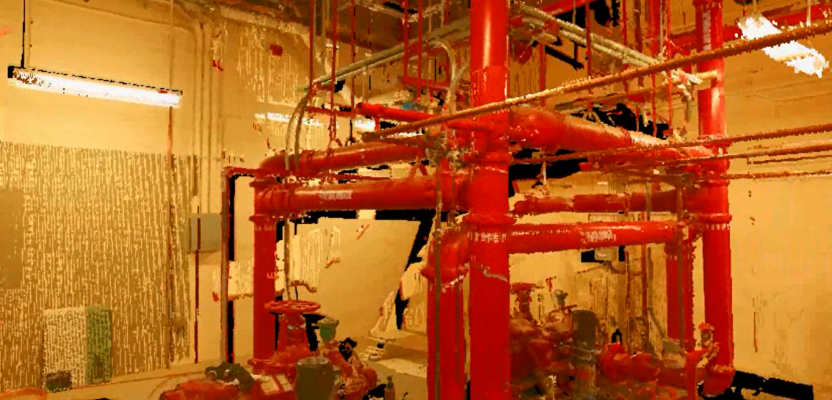Some clients don’t understand the benefits of point cloud data and how it can be leveraged. At my company I talk to them about how laser scanning might fit the type of project they have as well as the potential cost savings.
First and foremost, collecting and using laser point cloud data on your project could save you a lot of money. Some clients that tell us they don’t have money in the budget for a laser scan; that may be the case in the design budget, but in the overall project budget the lack of quality data defining existing conditions upfront will eventually be paid for out of the construction rework budget.
For example, when what you though was an 8” pipe is really a 6” pipe, yet a hundred feet of 8” pipe is on site ready to be used; or when a major data conduit is located on the center run of a conveyor system and has to be reworked—believe me, that costs money, and it’s more than the cost of a laser scan up front.
The value of point clouds goes way up in complex environments and down as the environments are simpler. We talk to many engineers who send out teams to measure existing projects, and they end up going back multiple times to re-check, and in the end they often discover that the existing as-built information is wrong. The final cost for all their re-checking is usually very close to the cost of an initial laser scan.
Consider the example of producing as-built data for a hotel renovation.
If there are 80 identical rooms, all with the same dimensions, typically there would be not as much value in using a laser scan. On the other hand, if the new owners doing the renovation are putting on a new facade and a drive-through portico and entrance, there would be a huge value to locating very precisely the existing structural and architectural detail that will be used in the new addition. This type of project is perfect for laser scanners, and the data collected is very valuable.
If the project is a green field, there are only a few rare cases when you would need a 3D laser survey. These could include if you need to pick up roads, lighting features, and adjoining buildings. Typically, these projects would be for clients who are seasoned 3D point cloud users who are producing full 3D model designs and want to incorporate all of the data from the beginning of the project.
Laser scans are more commonly used in projects such as complex process piping, whether it’s for energy, oil and gas, mechanical room renovation, complex structural components, or even sports arenas. Laser scanning machines were invented to map and document oil refineries and oil and gas offshore platforms. The cost of bad design errors goes up exponentially on these types of projects.
The other rule of thumb we like to us is this: Is the project steel and concrete or wood and sheet rock? The first is very unforgiving; the second is much easier to move and fit around an unknown condition.
Simply put, the best reason to order a laser scan is to bring existing site conditions into your design studio. Often, a good laser scan can be paid for in travel savings and will save you all those grey-area decisions that keep you wondering, “Is this how it really is?”
See the July issue of xyHt magazine for Tate’s article on talking with laser scanning clients about software and hardware needs as well as density versus accuracy.

